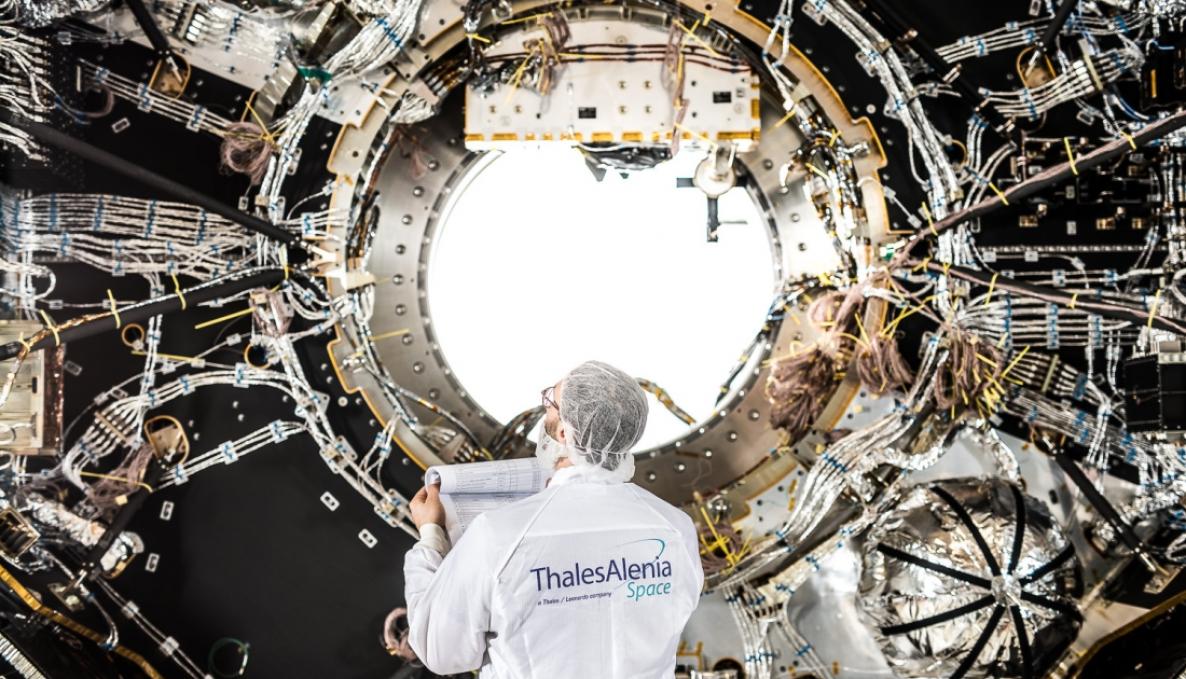Space, lighter satellites that communicate with light: for the first time prototypes have made contact with infrared "optical antennas". Test in Rome at the headquarters of Thales Alenia Space, for the "Tows" project funded by Esa at Sant'Anna School

Satellites become lighter and also learn to communicate through light. The complex electronic apparatuses inside them will be able to use light to communicate with each other, exploiting the technology “Optical Wireless Communication” (“OWC”) that ensures the transfer of data through light signals, thanks to LEDs and photodiodes (i.e. semiconductor optical devices) without using physical cables. This will result in significant savings in terms of mass to be transported in orbit and a reduction in assembly time. To study the feasibility of a communication system of this type and to produce the first working prototypes, the European Space Agency (ESA), with the support of Italian Space Agency (ASI), has funded the project “TOWS”, an acronym that derives from “Transmission of Optical Wireless signals for telecom Spacecrafts”, for an amount of about 700 thousand euro, under the coordination of Ernesto Ciaramella, Full Professor of Telecommunications at the Sant'Anna School.
The project has just reached a significant scientific milestone. In Rome, at the headquarters of the partner Thales Alenia Space (a joint venture between Thales at 63% and Leonardo at 33%), the leading company in the creation of satellite systems and orbiting infrastructures partner in the project, and specifically in its research and development laboratory Fablab, for the first time several prototypes within the same satellite, a few meters apart, exchanged data, using a communication protocol in use on all real satellites, without the presence of any cable, but only through the use of LEDs and photodiodes, which worked as infrared “optical antennas”.
Telecommunications, earth observation, navigation services and scientific experiments are just some of the applications of the thousands of satellites in orbit around the Earth. Each year, in fact, more than a thousand satellites are launched into orbit and the operation requires the movement of significant masses. The huge rocket and the big controlled explosion that allows to go out of the atmosphere and to reach the orbit, the propellant that generates the explosion able to lift the hundreds of tons of mass are scenes entered in the collective imagination, with economic implications too. As the mass increases, the amount of propellant needed increases and the costs are destined to rise.
The mass of a satellite is mainly due to its structure, photovoltaic units, instrumentation and cabling. All elements that are essential to its operation, yet - as demonstrated by the project funded by the European Space Agency - some of these components, even the most delicate, can be replaced with simpler and safer solutions, which - for communications - exploit precisely the light.
After the first successful test, according to the researchers involved in the project coordinated by the Sant'Anna School, there are many interesting implications of this result. “The cables on board a satellite are many, they cost, take up space and weigh. Reducing the number - explains the coordinator of the project, Ernesto Ciaramella - allows you to free space, reduce weight and production time. In addition, lighter rockets use less fuel, and result in fewer emissions. The same technology can also be applied to the assembly, integration and testing phases of the satellites themselves. In addition, light cannot pass through walls, so the 'optical antennas' represent an ideal solution for all situations that require high security and shielding from external interference, as well as for all environments in which radio waves can disturb the operation of other equipment”.
“In this project - continues Ernesto Ciaramella - solutions have been developed for communications within the satellite, but other lines of research also include optical communication between satellites and ground stations. In the latter case - concludes Ernesto Ciaramella - such technologies are necessary because there is a growing demand for bandwidth, for example for the purpose of transferring earth observation information”.



